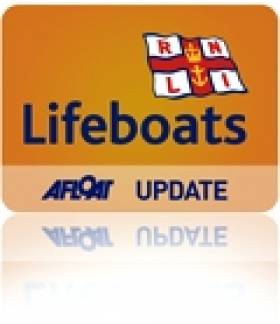Displaying items by tag: Ambulance
Skerries RNLI Crew Shadows Ambulance Teams in Unique Learning Experience
#RNLI - Skerries RNLI volunteer crew recently undertook an exercise the likes of which they had not done before - shadowing a local ambulance team to observe how they respond to emergencies.
Philip Ferguson, a Skerries RNLI crew member, is also an advanced first responder with the local Dublin fire brigade. He has been on many sea rescues and call outs, and though not all have resulted in an ambulance being called to the scene, there are always those incidents that do require their specialist services.
In this regard, Ferguson believed that for the local lifeboat crew to witness how the ambulance teams operate would provide invaluable experience to the crews.
He approached Skerries RNLI lifeboat operations manager Niall McGrotty and divisional operations manager Owen Medland with his idea to discuss the possibility of some of the local RNLI crew joining the ambulance teams on some of their shifts in an observational capacity. They would not be allowed to take part or assist the HSE crew at any point, they were there to look and learn.
Both agreed that it was an exercise worth pursuing, and an arrangement was then made with the local HSE ambulance base in Swords. Over a period of three weeks, all of the RNLI crew took either a day or a night shift with the HSE ambulance crews. As the ambulance teams were called out, the RNLI volunteer rode along in the ambulance, observing the HSE teams at work be it at roadside after car crashes or to the homes to which they were called.
They witnessed first-hand the long hours and the dedication put in by the HSE ambulance teams as they waited in A&E at hospitals and transported their patients with care. Each individual who went on the exercise said it was, without doubt, an enlightening experience.
They also witnessed the professionalism of the HSE ambulance crews in sometimes very difficult circumstances. They saw how the ambulance crews worked with each other, their partners, and how they did their utmost to provide care and attention to the patient as they reviewed the situation, analysed the needs of the patient and did what was necessary to stabilise and transport that individual to hospitals. Each of the RNLI crew who went on the training came back with renewed and utmost respect for the ambulance crews.
The RNLI volunteer crew has not yet had to put their latest training to the test in 2013. However, with the knowledge they gained on the observational placements, they have added to their skills.
Such was the success of this exercise between that it is hoped it can be repeated. Skerries RNLI would like to thank each of the HSE ambulance crews for allowing them to spend time with them and learn.




























































